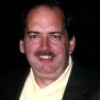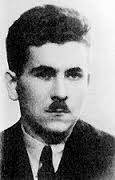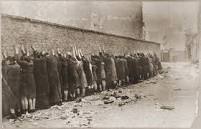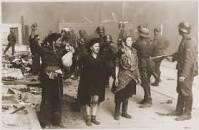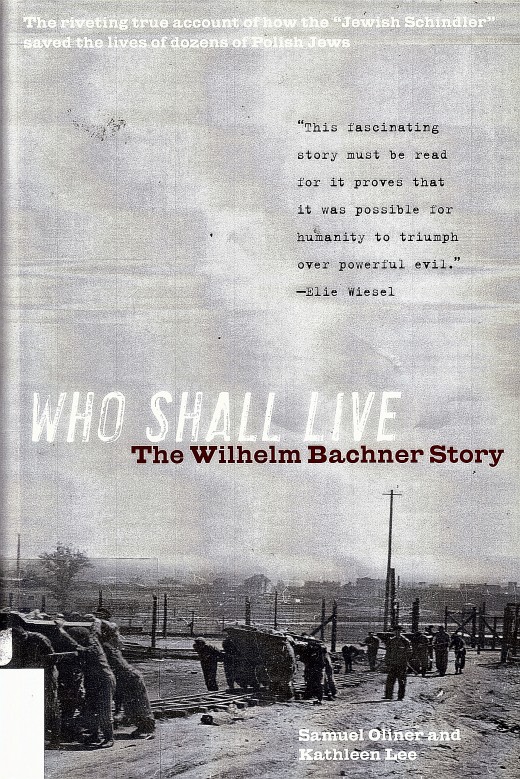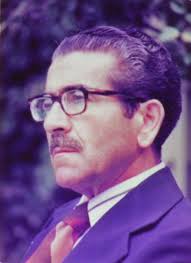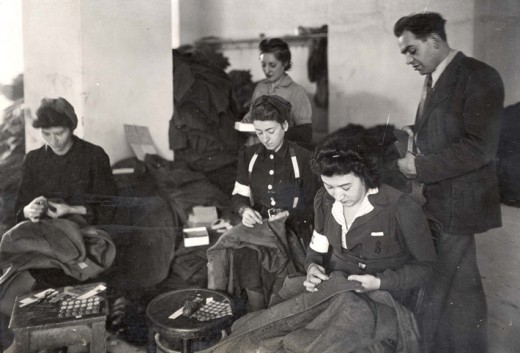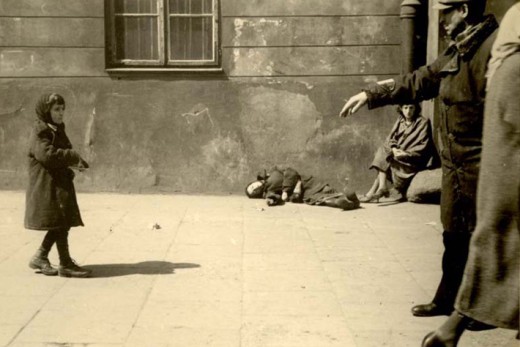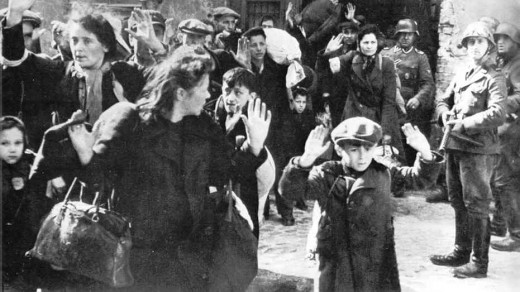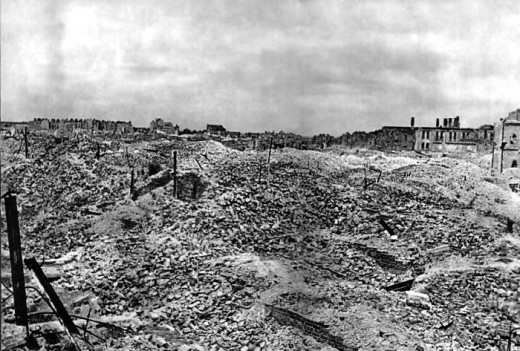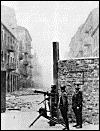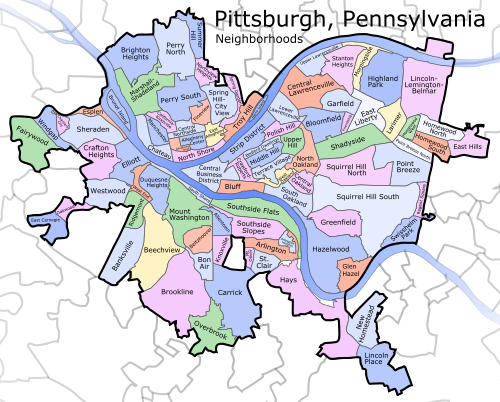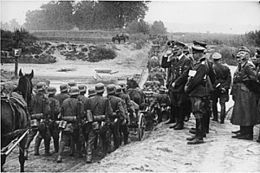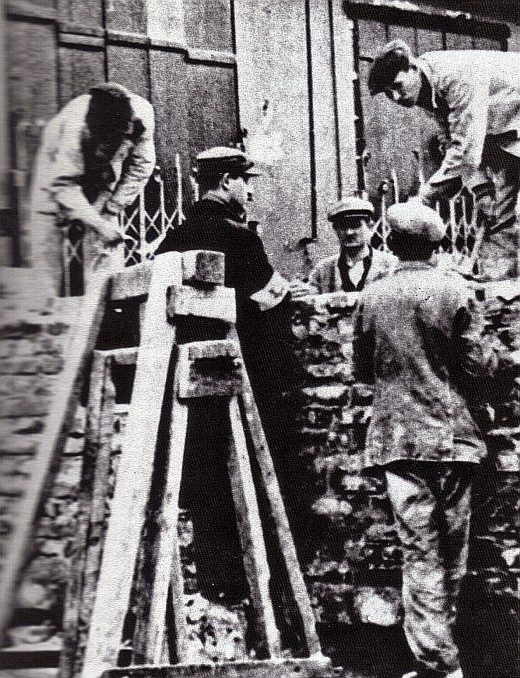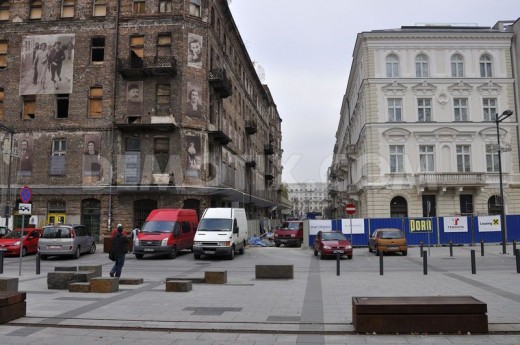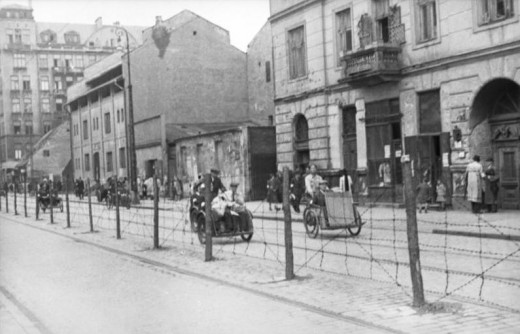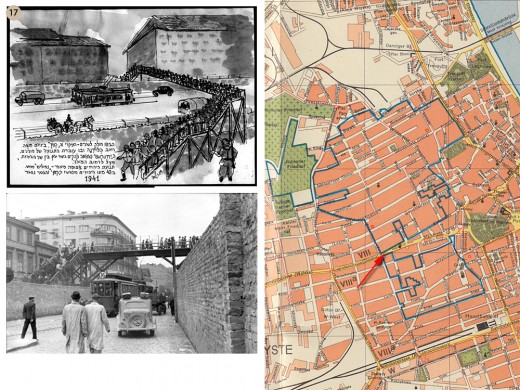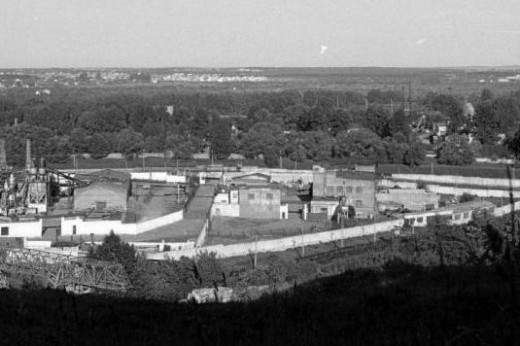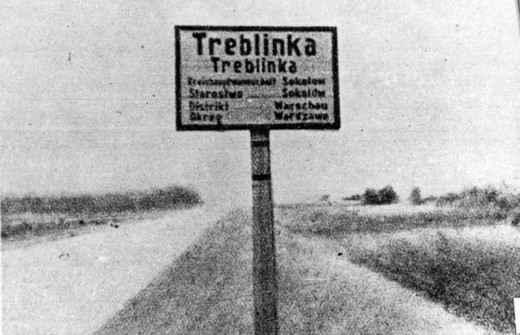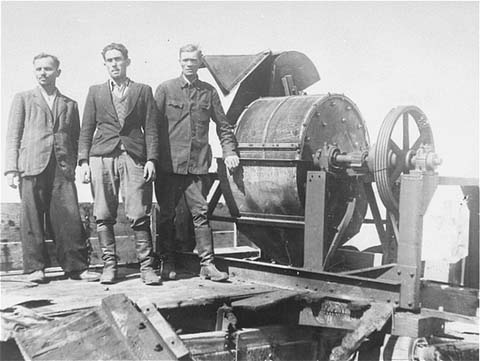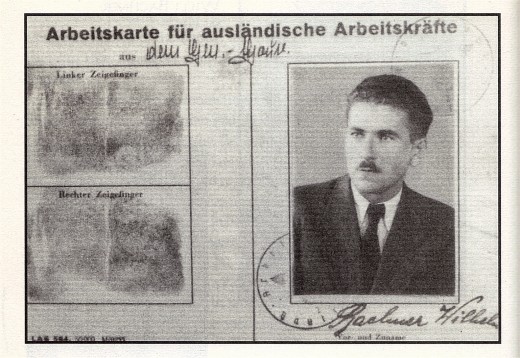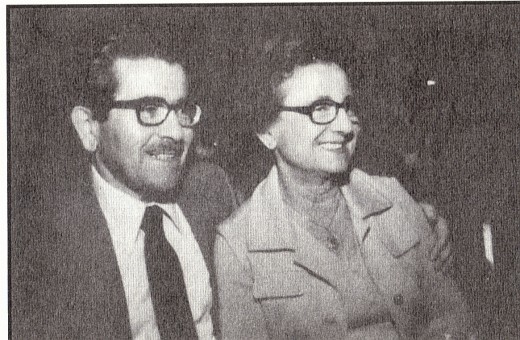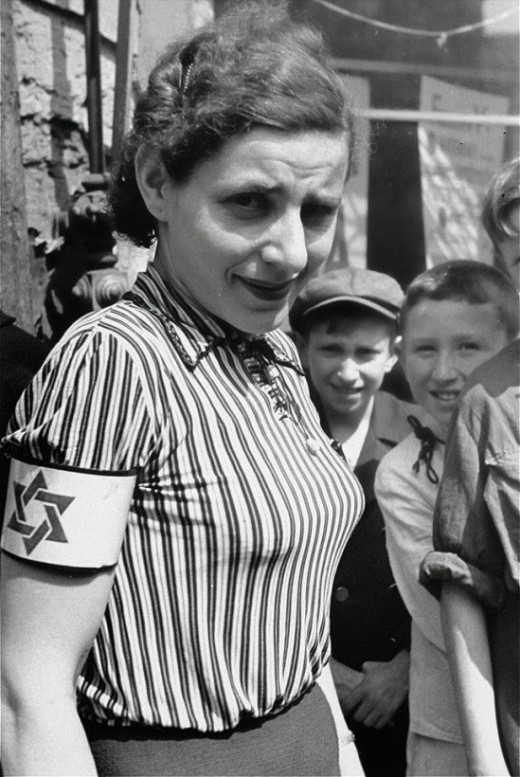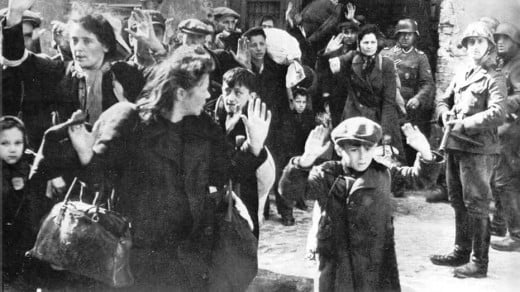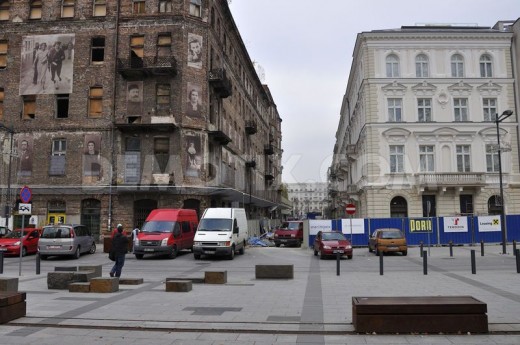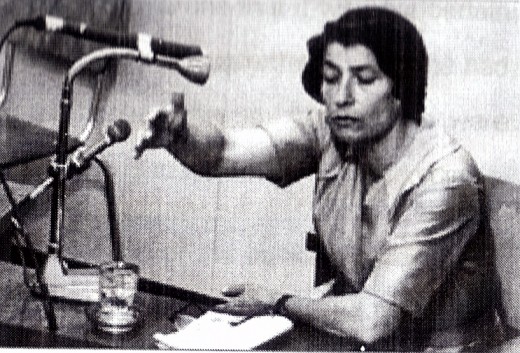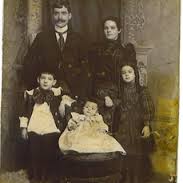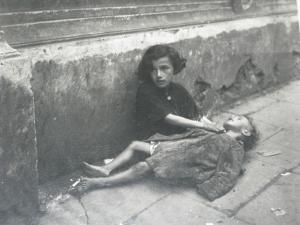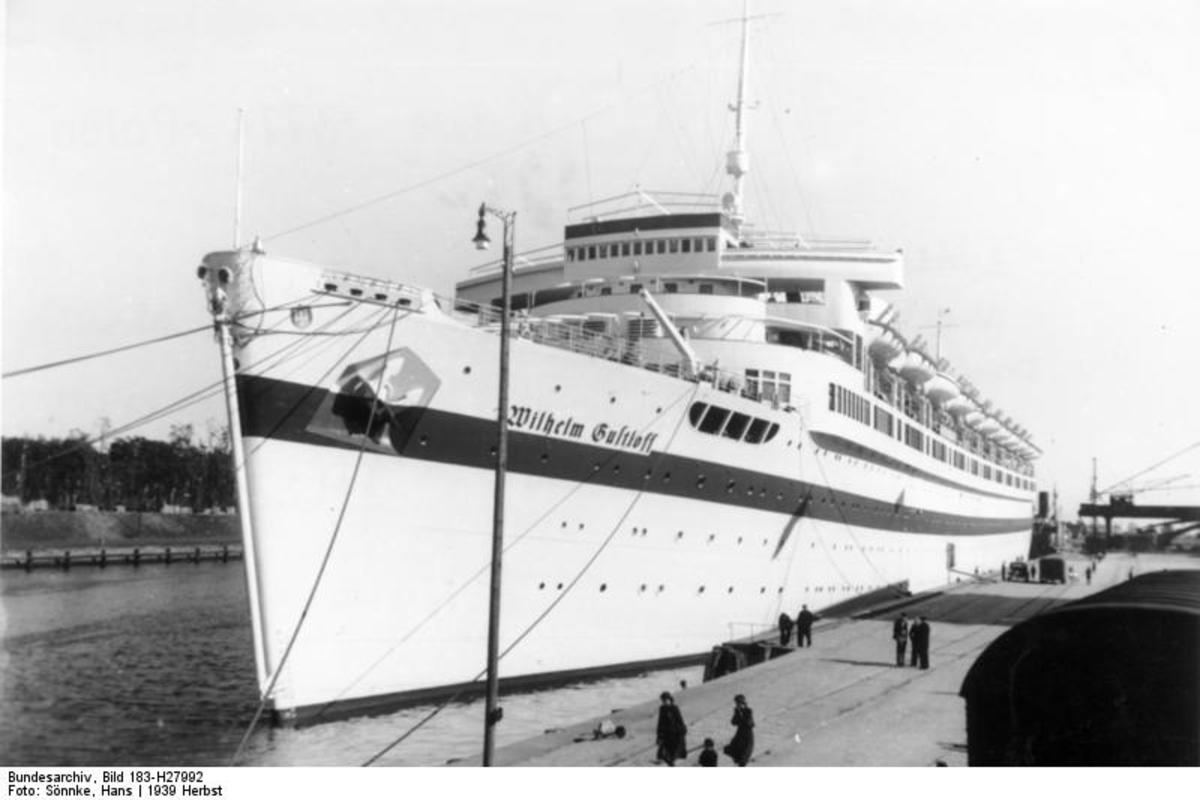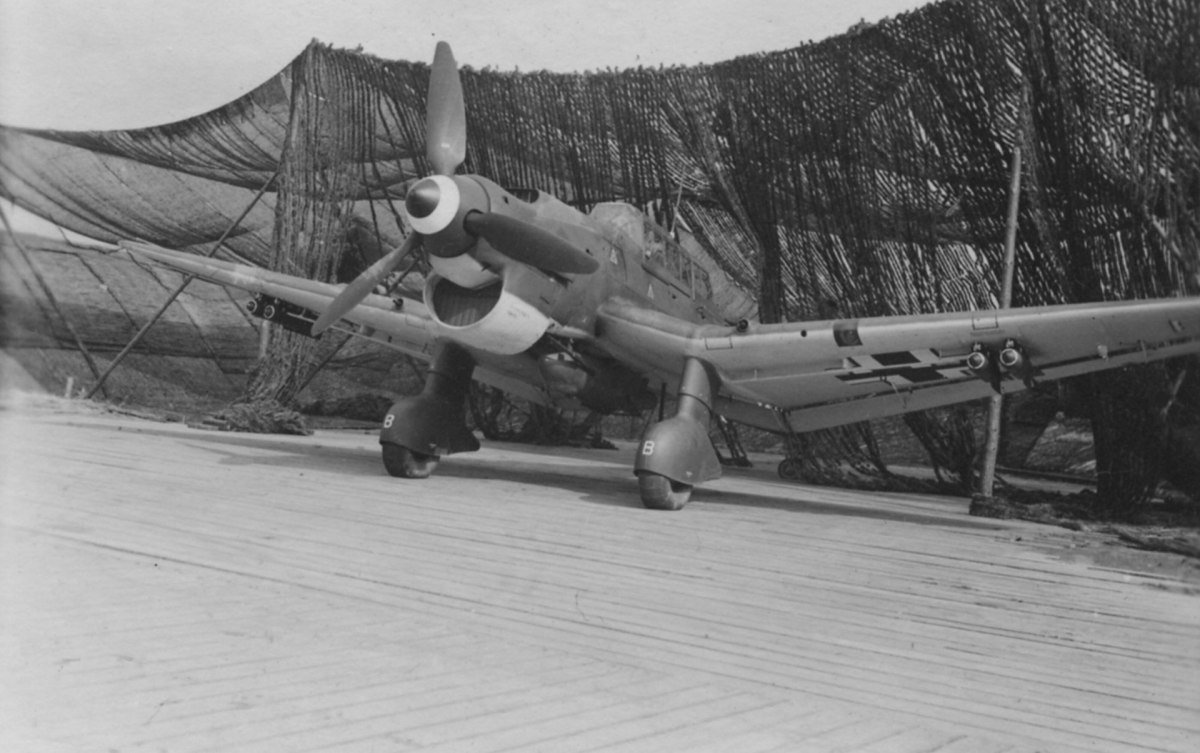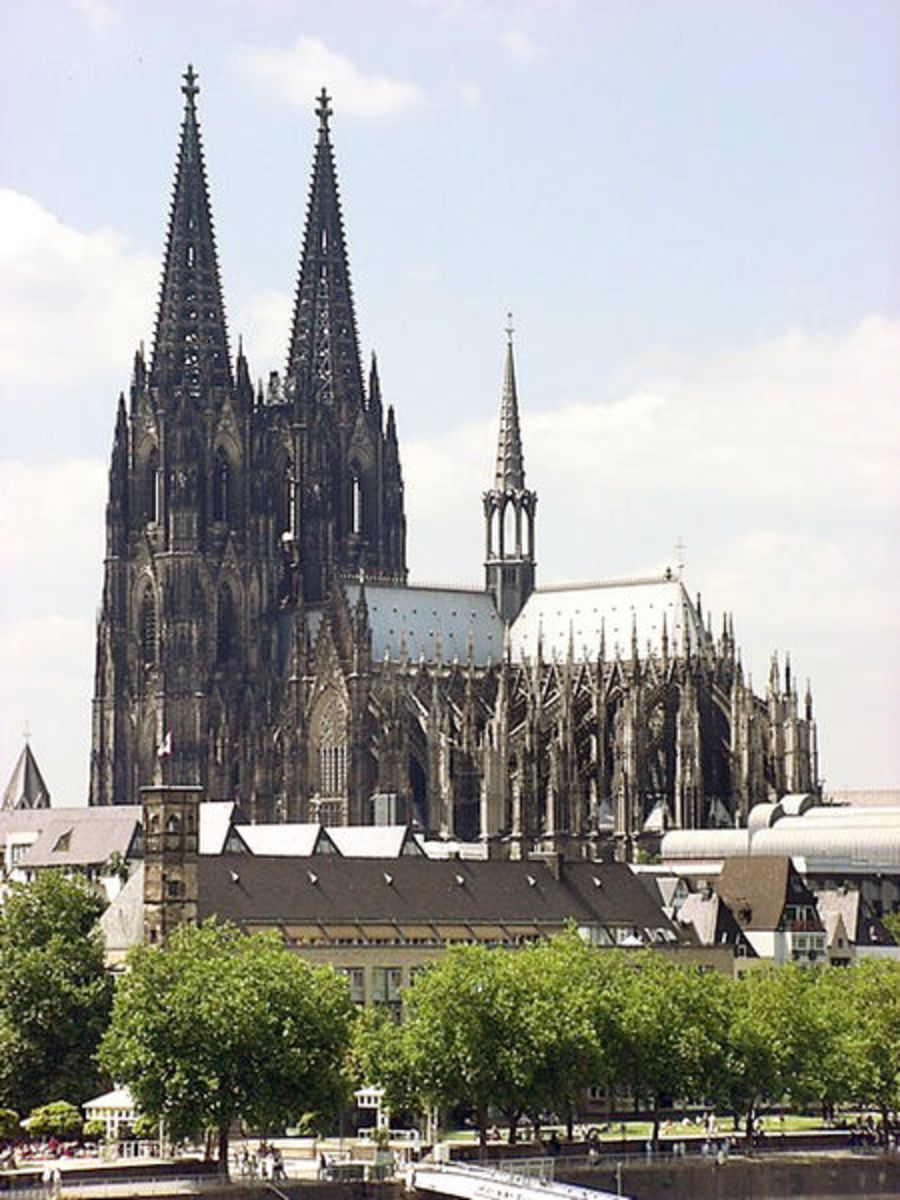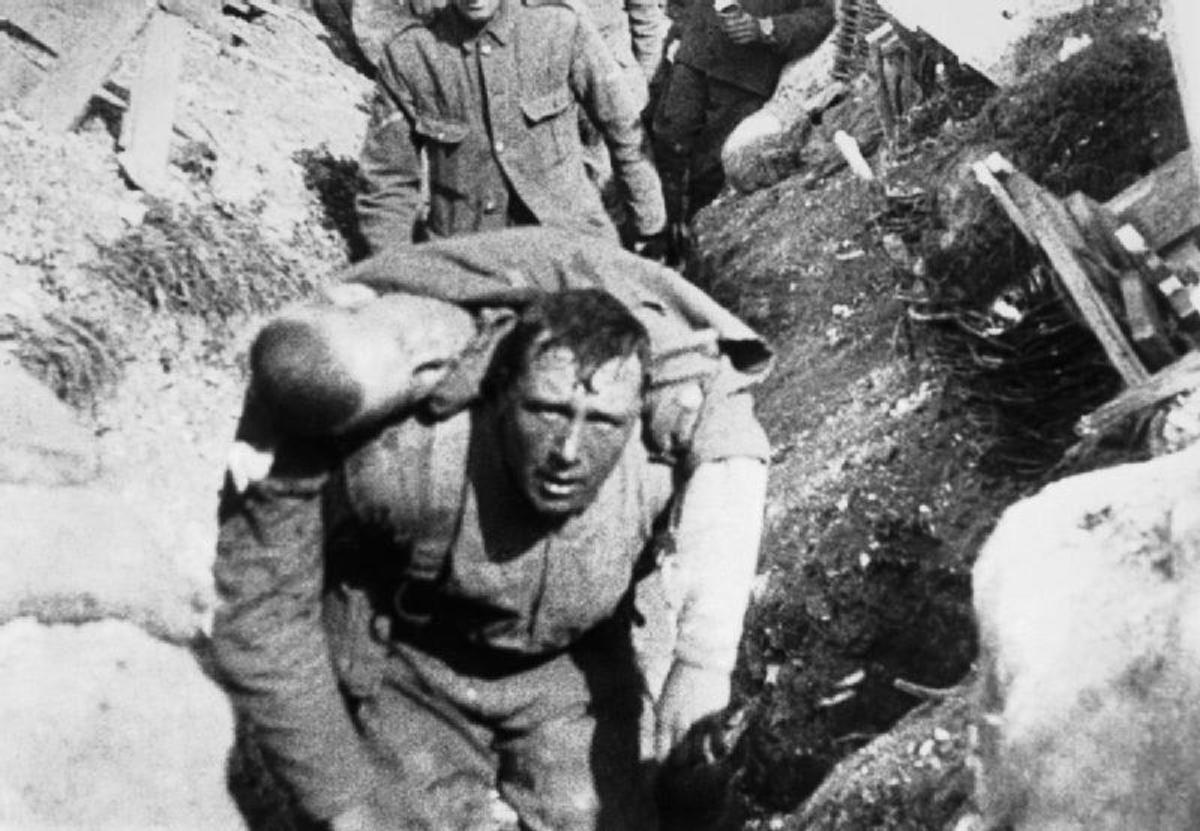- HubPages»
- Education and Science»
- History & Archaeology»
- History of the Modern Era»
- Twentieth Century History
Wilhelm Bachner of the Warsaw Ghetto - A Story of Survival During World War 2.




























Do you know what happen in the Warsaw Ghetto in Poland during World War 2?
This is the story of Wilhelm Bachner.
Why this story? I was searching Ebay and found this book about Wilhelm Bachner titled "Who Shall Live." It was written by Samuel Oliner and Kathleen Lee. A brief read about the book intrigued me as it was about someone with my last name. I ordered it and I am glad I did. It was a eye opening read and also has me researching my roots and background. I knew growing up that my fathers parents and grandparents had roots in Germany. I assumed I was of German descent all my life until I read the book and did a little research. My grandfather on my father's side was Ambrose Bachner (1868-1906).
Wilhelm Bachner's home town was Bielsko in Poland. He grew up speaking German both at home and in school. His family was assimilated in to Australian culture and Wilhelm Bachner admired the German traits of organization and efficiency. However, Wilhelm Bachner was a Polish Jew.
He was educated at a German Technical University known as Deutsche Technische Hochschule at Brno in the Czech Republic. The University became two parts and known as the German and Czech Technical University. Many of the students at the time had an Austro-Hungarian background. It was in existence in Brno from 1849 to 1945.
Wilhelm Bachner graduated and received a degree in engineering. He was youthful and looking to conquer the world as all young people. A family friend offered him a chance to manage the friends Warsaw Office which he accepted without hesitation. It was January 1939 when he arrived in Warsaw. During this time he met his future wife who was named Cesia Diamant. Warsaw was the city of the largest Jewish population in prewar Europe. New York City had the next highest population.
On the first day of September 1939 the Germans attacked and invaded Poland with a thunder. They rolled into Warsaw on September 8 and surrounded the city on all sides after heavy damage from bombing and troops. The city of Warsaw was now under siege especially the Jewish section. Wilhelm Bachner believed the targeting of the Jewish section was deliberate by the Germans. He knew that Hitler's hatred of the Jews spread between the Jewish synagogues, however the German attacks on Jews was increasing.
Wilhelm Bachner and his fiancee along with her parents hid in the basement. They sensed the increasing danger that the Jewish community in general have been experiencing with the Germans over time and Hitler's rise to power. In Hitlers book Mein Kamp Hitler described the Jews as anti-German conspirators, criminals, and a life threatening pestilence.
The attack on Warsaw and the Jewish community was becoming more intense and the situation for the Jews in Warsaw was deteriorating Wilhelm and Cesia decided to marry and face what was happening as husband and wife. They were married on October 11, 1939 in their home as a marriage in a synagogue would have been dangerous. For a brief moment they dreamed of the future with children and grandchildren.
The Jewish Quarter was heavily damaged in the September German bombing. In early October all Jewish firms were "Aryanized" by the Germans. Jewish assets were frozen or confiscated. Radios were required to be turned in to the Germans. All Jewish men between the ages of 14-60 will be subject to forced labor. Housing was in short supply due to the bombing and destruction. Arm patches were issued to the Jews and Jewesses to identify themselves. The population in the Warsaw section numbered approximately 359,827 Jews or more as more Jews were being forced in to the Jewish section. The climate in the Warsaw Ghetto was deteriorating rapidly.
Eventually, Wilhelm's parents and family came to live with them. The Germans continued to tighten the noose around the Jewish population. In January 1940 the Gestapo ordered the registration of all Jewish property. On January 26 Jewish worship was forbidden any where including the synagogues although worship in secret took place among the Jews. Jews were forbidden to travel by train, use public libraries, or purchase anything from Aryans. Forced labor demands from the Germans increased. In April 1940 the SS (Schutzstaffel) ordered a wall be built around the Warsaw Jewish section of the city. The Nazi's informed the Judenrat it would have to build the wall using Jewish materials and labor they they (The Jews) would have provide. The top of the wall was strung with barbed wire. The Judenrat was the Jewish leadership inside the Jewish section. It was set up by the German military government to carry out their orders in the Jewish community.
The time was running out for Christians to get out of the German ordered area soon to be known as the "Ghetto." Wilhelm Bachner was lucky as he had a friend where they both agreed to swap their apartment flats. The final border lines of the ghetto were being drawn. In October 1940 50,000 homeless Jews were in the walled area ghetto without a place to live. As of November 1940 the gates of the ghetto area were closed to Jews unless they were leaving under armed German guard. Those who left did so only to work in factories in the Aryan section of Warsaw where they worked as slave labor for basically no pay and one meal a day. Jews could not shop at markets outside of the ghetto. The pressure was beginning in the Ghetto that would lead to the future uprising. It is reported that approximately 850 "ghettos" were established during the 12 years of Hitlers reign (1933-1945).
There was now nearly 400,000 Jewish settlers confined to about 22 square blocks. The population density was about 146,000 people per square kilometer.
Authors Comment: The author lives in the City of Pittsburgh, Pennsylvania. The City is 58.3 square miles or 151 square kilometers. The City population is 305,841 based on the last census. The small neighborhood where the author lives equals 5.3 kilometers square and has a population of 13,876 persons with 6809 houses. If half of this Brookline neighborhood was walled off by the Germans and populated the same density the population would be 389,900. Can you image increasing a neighborhood population from 6938 to 389,900. Can you image the German Gestapo ordering all the residents and more of the City of Pittsburgh to move and live in one city neighborhood out of 90 neighborhoods in the City of Pittsburgh. This is after an invasion of your country. This is and was the Warsaw Ghetto.
Do the numbers for your neighborhood to image what the ghetto was, surrounded by a wall, guarded by soldiers with machine guns, being terrorized, not able to leave, starvation and disease, and living on a 800 calorie per day per person ration or less.
For Wilhelm Bachner the day to day life in the ghetto was degrading. He was a man educated in a German University but treated like any other ghetto resident. It was humbling from what he was accustom. Wilhelm Bachner struggled everyday to find food for his family. He was living in an overcrowded apartment with no privacy. Jews were not allowed out on the streets after the curfew time. The Germans and police with the only one's allowed out after curfew. In short there were executions, extortion, black market activity, corruption, smuggling, homelessness, disease, food shortages, and more in the Warsaw Ghetto.
Wilhelm Bachner thought constantly how he could get out of this situation that Hitler has put him in. He knew the ghetto situation could only lead to starvation and death for him and his family. Wilhelm Bachner could not get engineer work on the outside and would be forced to do unskilled work or illegal activities such as black marketeer. He resigned himself to do the will of God and find a way to survive.
It is clear the Germans wanted to segregate the Jews from the start. They were now going to starve them as the official food ration was 800 calories per day per resident and it got lower over time. It is now December 1940. Most of the food produced by Poland was being shipped to Germany for the war effort and the citizens of Germany.
Wilhelm Bachner was out on the streets of the ghetto shopping when he saw his cousin Annia at a distance. He noticed she was not wearing an armband indicating she was Jewish. Wilhelm knew by seeing this she was passing herself off as non Jewish. There eyes met but he knew she did not want him to acknowledge as Jewish police were nearby. They both walked in to a shop separately acting as though they did not know each other. Wilhelm slipped a note under some linens when the store clerk was not looking. After he left and when the store clerk was busy with another customer Wilhelm's cousin secretly picked it up. It had Wilhelm's home address written on it.
Later that night there was a knock at the door of Wilhelm Bachner and his family. It was Annia. They rejoiced. Annia explained that she came to Warsaw last summer. She got a job as a governess for a Polish family and Aryan papers. She further explained to Wilhelm that she quit yesterday as her employer were questioning her background. They were suspicious of who she was. Annia next explained that she was in the ghetto that day as she was off. She further explained that she got a job that morning working for a German architect. The architect had just arrived recently and indicated he was hired by the German Army to do work for them.
The visit with family turned to Wilhelm with Annia telling Wilhelm he should get a job there. You speak German, do not look Jewish, and you have a fancy engineering degree from a German University. I urge you to go see Johannes Kellner at Ulica Flory 5 and tell him you are an engineer. When you come please act like you do not know me.
Wilhelm thought about it and after New Years 1941 he approached a foreman of a works detail who takes Jewish workers to work on the side of the Aryans or outside the wall. The foreman allowed it with a bribe paid. Wilhelm felt like a free man on the other side. He went to Ulica Flory 5 and met Johannes Kellner. Kellner said you are German. Wilhelm replied no I am Polish. Kellner interviewed him, reviewed his degree and background, and offered him a job. He said the Luftwaffe hired the firm to paint a new barracks at the Warsaw airport. The next day Wilhelm and Kellner traveled to the airport to meet with the Luftwaffe.
In short back at Kellner's office Kellner told Wilhelm Bachner to arrange for polish workers to construct the barracks and to obtain the materials for the job. Wilhelm saw an opportunity to get in and out of the ghetto and to obtain materials cheaper with demolished building materials. Kellner agreed and gave Bachner the necessary documents. Wilhelm Bachner disposed of his old identity card from the ghetto and replaced them with new identification and work papers.
The airport project was completed within a couple of months when Wilhelm got the news from Kellner that he would be returned to Dresden Germany. Wilhelm Bachner's heart went through the floor. He knew he would have to return to the ghetto. Wilhelm Bachner did not want this job to end. Wilhelm Bachner was in the office and asked Herr Kellner why not start your own construction company in Warsaw and make your own profits. Kellner intrigued said I have no workers or tools.
Wilhelm said enthusiastically that I can get Polish workers and tools cheaply. You Herr Kellner get the jobs and deal with the Germans. They thought about it and agreed. The new company was named Reichsdeutsches Bauunterehmen. Wilhelm Bachner now went from hourly worker to salary.
The new firm received a second contract for a new airport. The firm was officially declared kriegswichtig meaning important to the war effort. This made it easier to obtain materials, travel permits, and other matters not subject to the normal bureaucratic government impediments. Things are now good giving Bachner wide abilities and authority.
On June 22, 1941 Germany invaded the Soviet Union. Johannes Kellner saw an opportunity and became a designated contractor for the Ukraine. Wilhelm Bachner either visited his family in the ghetto when he could or arranged to sent money to help them with a courier underground. Wilhelm while away started to learn about the German killing of the Jews in Berdichev. They had a population of 60,000 Jews. Few survived. The German SS officers and special squads were starting the extermination of Jews in Soviet territories. Wilhelm Bachner thought things were bad in the ghetto until he heard about Berdichev. At this time it is estimated that 150 Jews a day were dying in the Warsaw Ghetto. Bachner worried about the Jews who were working for him under false identities. Wilhelm Bachner now has oversight over 500 workers for the company.
The Germans regularly question him and his workers, but he was fast to speak up and defend his workers and who they were. He lived under some suspicion. As time passes Bachner continues to learn more and more about the slaughter and enslavement of Jews in Europe.
World War 2 has started and is in progress. Hitler and his troops are finding that the Soviet Union was and is costly. By the end of 1941 a quarter of all German troops on the Eastern front have been killed. The extermination of the Jewish population continues. The United States has now entered the war with the attack by the Japanese on the U.S. Navel Fleet at Pearl Harbor in the Hawaiian Islands.
The new construction company created by Johannes Kellner and Wilhelm Bachner got a contract for a new airport at Kiev. They went there to start work early January 1942. Bachner continues to worry about his family in the ghetto where conditions are getting worse and the calorie allowed occupants is greatly reduced further. On his last visit Wilhelm noted that goods are getting scarce, typhoid is present, people dying in the streets, food shortage present as money was being spent to rebuild parts of the wall. Wilhelm Bachner knows he will have to get his family out of the ghetto some how. I urge readers to read the book "Who Shall Die" as it has more detail and facts than this article can tell. You will be moved.
On his return trip to Kiev Wilhelm Bachner stopped at a train station and saw his uncle a part of work crew guarded by the Germans. They did not acknowledge each other (too dangerous) but Wilhelm knew he had to get his uncle free from the death sentence he was under.
Wilhelm Bachner with authority drew up paperwork requesting his uncle's release from the Janowska labor camp. He went to the camp and asked the guard if he could see the commandant. The commandant met him outside the camp fence. The commandant said "you expect me to release a Jew?" In short Wilhelm Bachner failed in his attempt to persuade the commandant to turn over his uncle (unknown to the Germans and Commandant) for work for the German war effort.
Bachner knew he had to try again. In short, he hired someone in the underground to assist. They formed a plan to distract the guard when they learned Wilhelm's uncle was on a work detail to repair some railroad tracks. They approached the work detail site. His uncle slipped away and jumped in to the car Wilhelm Bachner was in while the guard was distracted by the underground resistance. Bachner paid 200 marks for the help. For now his Uncle Heinrich was free. Wilhelm Bachner got him Kellner identification papers with a new name and he worked for the construction company.
In 1942 the German Reich decided the Jewish forced immigration was impractical. It was eventually decided what the "Final Solution to the Jewish Problem" would be. In time extermination camps would be the solution. Heinrich Himmler would be in charge. The new camps were exterminating thousands by the summer of 1942.
In the ghetto, Bachner worried about his family. There were daily executions, starvation, and disease. In May 1942 3,636 died of starvation. The Jews of Warsaw are aware of the Treblinka 2 death camp. Treblinka 1 was a slave labor camp. In June 1942 Poland was hearing the BBC reports on the extermination of the Jews. In July 1942 Wilhelm received a visit from a friend from the ghetto who informed him things are bad. The Nazi's were starting to deport Jews from the ghetto. On one day they took 6,000 Jews. They believe they were sent to Treblinka. It was now clear Wilhelm had to get his family out of the Warsaw Ghetto.
After planning they decided to take out Wilhelm's brothers. One was named Bruno who was 15 years old. As the plan started to unfold Bruno and his brother was picked up in a Aktion. This was a word for deportation action. They were told to report to the Umschlagplatz or place of deportation usually near the railroad tracks. Trucks with loud speakers drove through the ghetto ordering the assembly of Jews. The Judenrat had been ordered to deliver six thousand Jews everyday. Bruno got separated from his brother Heniek. They attempted to find him but failed. Heniek had work credentials and was held back as he was only 20 years old to work at a laundry.
Wilhelm's mother Helena already depressed due to ghetto conditions and the growing executions and deportation's became further despondent due to Bruno's likely death. Within a week she threw herself off their apartment balcony and died. Wilhelm blamed himself for waiting too long.
In August and September 1942 Wilhelm, his family, and friends finally escaped the Ghetto. They bribed a work party foreman and got help from all they could. They escaped and eventually made their way to Kiev. Some worked for the construction company. The exploits of how all this happen should be read in the book. After getting back he tried to find his sister Anna. He learned she may be dead. He lost his mother Helena by her own choice, his sister Anna and brother Bruno lost to the Nazi death machine to use his words. At this point he had saved eight Jews (family) and more would come as a way of living on and defeating the Nazi's final solution. He saved many others by hiring Jewish workers for the construction company and providing them with false identification papers and work permits.
During the summer of 1942 an estimated 300,000 Jews were deported in the Great Deportation to Treblinka 2 camp for extermination. During this time and late 1942 more Jews came from Warsaw. Bachner assisted them with housing, identification, and ration cards. The Kellner construction firm continued their work in Poland, Russia, Byelorussian, Ukraine, and Germany. Wilhelm Bachner assisted approximately 32 (including two relatives) with escaping to Kiev. Many of the Jews were from Bielsko. Some of the Jews saved by Bachner were from the Krakow ghetto.
The Fall months in the Ghetto were quiet. The following year in 1943 when some of the Jewish population started to resist (ZOB) the stage was developing for the Warsaw Uprising where resistance to the Germans was taking place. The first test was in January 1942 when the Germans tried to round up more Jews for transport. The Jewish resistance attacked and the Germans retreated. In January 1943 the Germans were only able to roundup 5000 Jews with no papers. It was at this time and since last September 1942 that there were only 50,000 Jews left in the Ghetto. It was clear this little uprising changed the behavior of Jews and the Germans according to Zivia Lubertkin of the resistance. The Germans ceased their roundups and decided to starve the remaining ghetto population.
Around this time in early 1943 Germany had lost over 13 million men in the war. An estimated 10 million of these men died on the Eastern Front alone.
The Jews of the ghetto dug in with their own bunkers under the buildings and what ever they could. They prepared with whatever weapons they had. The Jewish resistance was outnumbered and out gunned only having pistols, grenades and rifles taken from the Germans. The final liquidation of the Ghetto was deliberately set for the Jewish Feast Day of Passover. On April 19, 1943 German forces entered the Ghetto. The approximate number of troops was two thousand. The forces were commanded by General Jurgen Stroop. General Stroop decided to pulverize the buildings and use flame throwers to get at the Jews and resistance fighters in their bunkers. The ghetto was eventually destroyed for the most part by May 16. Resistance in small numbers continued until the fall of 1943. Most of the fighters were killed. Yitzhak Zuckerman is quoted as saying, "The really important things were inherent in the force shown by Jewish youth, after years of degradation, to rise up against their destroyers, and determine what death they would choose.
Wilhelm Bachner learned of the uprising in the Warsaw Ghetto when he was in town with Johannes Kellner for the purpose of drafting a report for the firm. What he saw and learned as was reported above was that the Germans were not invincible. The Ghetto was resisting and the Germans were losing millions of men on the Eastern Front. Wilhelm was glad he got his family out of the ghetto in time as the ghetto was destroyed shortly thereafter.
Wilhelm and Cesia Bachner continued their hiding and working for Johannes Kellner. A couple of the Jews with Kellner work papers were discovered due to their own mistakes. They were shot by the SS. The war was closing in on Germany and they were being pushed east by the Russians and the areas coming under Communist rule. The construction company was slowly consolidating and not getting paid from the German government for work completed. The D-Day invasion was under way and it was clear that the war would be over soon.
When the war ended the Bachners lived in Poland but the antisemitism grew intolerable. In 1951 William and Cesia Bachner emigrated to the United States and lived in Oakland after a brief stay in Bramberg Germany. He eventually obtained an engineering position in San Francisco where they lived a quiet life. Cesia died in November 1990. Wilhelm passed away four months later. They had no children due to Cesia obtaining an abortion during the early war years.
This hub started with my interest in the subject and because of the name of Wilhelm Bachner. I became further interested when I received the book and looked at the identification card for Wilhelm Bachner. The signature had a lot similarities to the signature of my father. Is it a coincidence, school training, or a family trait. I do not know. While this hub started because of this story it moved me, made me think, and caused much emotion within me which I still can not talk about as I process it. I personalized these events by imaging it happening where I live now. I urge the reader to read the book and study the events of this time and events in history. Thank you for reading this hub.
Author's Comments: The authors of the book interviewed Wilhelm Bachner along with the Jews Bachner saved including their families in 1983. In a quick review of a couple of records including Find A Grave that individuals with the name Bachner died at Auschwitz, Treblinka 2, and Dachau.
Information on Warsaw Poland
- 912 days of the Warsaw Ghetto - YouTube
The Warsaw Ghetto was established by the German Governor-General Hans Frank on October 16, 1940. Frank ordered Jews in Warsaw and its suburbs rounded up and ...
The Warsaw Ghetto After German Destruction
- City Of Ruins; Destroyed Warsaw-Poland In 1945 - YouTube
By January 1945 85% of the buildings were destroyed: 25% as a result of the Uprising, 35% as a result of systematic German actions after the uprising, and th...
- Warsaw Ghetto - YouTube
A Warsaw Ghetto Tour Today
